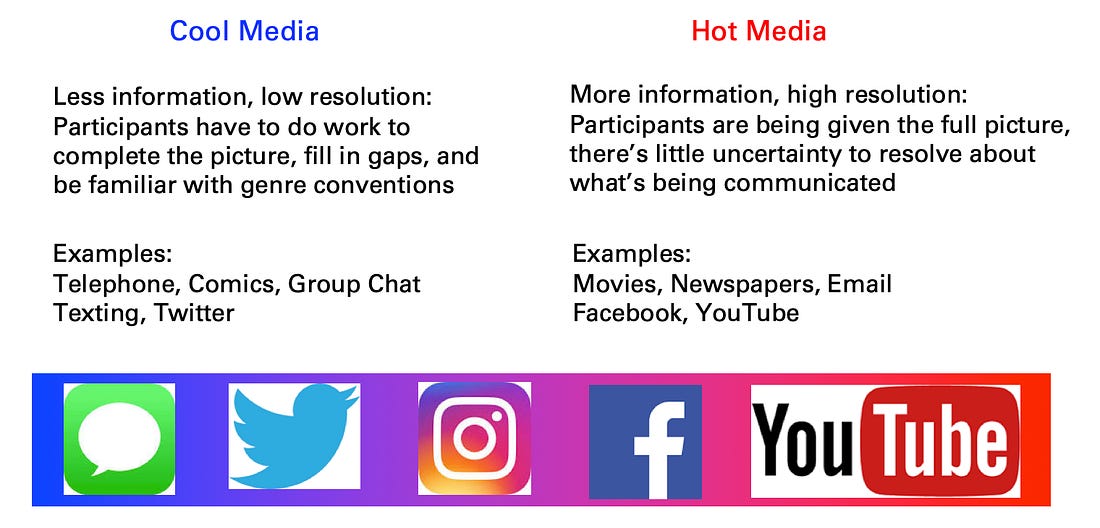up::
Tags:: #🌱
# Hot and cold media
Marshal Mcluhan proposed the theory of hot and cold media.
It put different communication mediums for information on a spectrum.
Information mediums which promote communication that resolve more uncertainty are defined as hot mediums. Think of a YouTube video for instance. You get audio, video, and bodily motions to help you understand the information being transferred.
In contrast, information mediums which promote communication that resolve less uncertainty are defined as cold mediums. Think text messaging for example. It's incredibly difficult to understand the nuances of a text message because you can't hear the voice that it's being said in.
### Most Popular Mediums on a Spectrum:

Generally hot mediums heat up conversation and cold mediums cool things down. For example, if you speak through a hot medium like email, then your conversation is likely to heat up over time.
But if you speak through texting, the conversation is likely to stay ambiguous.
### 🔥The Hottest Medium of All
Without realizing it, the hottest medium of all is actually audible speech.
Audible speech burns hot with information. Intonation, accents, innuendo, vocal phrasing, emphasis, pauses, all communicate far more than a transcript can.
And what is the most popular medium of audio transmission? YouTube.
This is a problem because [[Constant connection to audible information is hurting people's ability to be comfortable with themselves]].
Related: [[Information is simply a resolution of uncertainty]]
___
# Resources
[[The Audio Revolution]]